Eco-Restoration Report back from SERA Conference Brisbane Sept 2018- Society for Ecological Restoration Australasia 2018 Conference
By Basil Schur, Green Skills
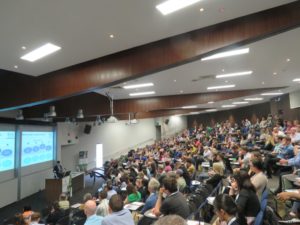
Introduction
Between 25 and 28 September 2018 I attended the Society for Ecological Restoration Australasia conference held at the University of Queensland at St Lucia, Brisbane. Representing Green Skills, I would like to acknowledge the support of Green Skills and South Coast NRM in being able to attend this conference.
I gave two presentations. The first “Using the YouTube platform to promote Gondwana Link eco-restoration” and the second “Using Hooded Plover to promote restoration of lake foreshores in WA’s Great Southern”. Both attracted audiences of about 40 to 50 people and appeared to generate interest and questions.
Overall impressions
The conference brought together over 300 people of diverse background with a strong focus on research and applied aspects of ecological restoration covering both terrestrial, aquatic and marine ecosystems. Although 3 days of listening and discussing followed by a long day of a coastal tour is a lot to handle, I did gain a lot from the diversity of knowledge and experience presented. The conference highlighted for me the economic size of the sector, yet how hard non-government organisations find it to access sufficient resources especially for monitoring and longer term organisational support.
I noted some big gaps in subjects covered; no report backs from how landscape scale or trans-boundary projects are going, no review or concern about inadequate government biodiversity programs, little integration between advocacy/protection/ and restoration programs and relative merits of each, little reporting by utilities (ie water) reporting on their large scale restoration catchment or riparian campaigns, with the eception of mine site rehabilitation, no review of other industry performance with respect to ecological restoration (ie agriculture, forestry). The topic of remote sensing/GIS was poorly represented. There was also no presentations by some of the big players in private land management ( Land for Wildlife programs, Bush Heritage, Australian Wildlife Conservancy).
While I found the conference great for providing a professional development opportunity, I would have preferred part of the conference to have allowed for more networking and small group session, ideally with open technology format. It would also have helped to make the overall conference more inspirational if it included more music, art and cultural activities.
Some take home lessons I learnt:
- How advanced is the research program associated with the native seed industry and the importance of direct seeding approaches keeping up to date with these advances.
- Need to incorporate the National Ecological Restoration Standards into project framing and design- I recognised how inadequately I have referenced these standards in my own projects.
- Availability of platforms for promoting eco-restoration through films ( ie Regen TV see https://www.aabr.org.au/regentv/ )
- The value of social network theory in helping improve public engagement and project promotion.
- How big the Bush regeneration industry has become in Eastern Australia and how much support given at Local Council level.
- A wide range of eco-restoration approaches now include a sophisticated incorporation of climate change understandings.
- The thought going into scaling up eco-restoration, and how difficult this is with coral reef and sea grass restoration.
Some Opportunities
- Value of linking University research programs of community eco-restoration priorities.
- Social enterprises linked to eco restoration
- Highlighting Eastern state examples of Local Government Support for long term bush regeneration and management
- Economic case study linked to Gondwana Link ( I invited Dr Makysym Polyakov of UWA to have his team focus a project on Gondwana link – perhaps a Cost Benefit analysis
Presentations attended:
I attended a wide range of key note and shorter presentations. A booklet of all the summaries and most of the key note power-point points will be available on the SERA conference website.
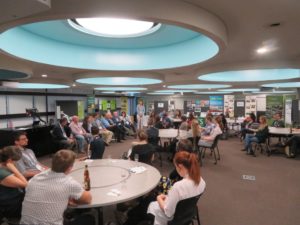
Keynote Talks
- Professor Jakki Mohr USA “Challenges in innovation in ecological restoration”
- Professor David Lindenmayer “Key lessons form long term research for restoration and integrating conservation and agricultural production .”
- Dr Makysym Polyakov “Thinking differently about restoration: economist’s perspective.”
- Dr Tein McDonald “How the National Restoration Standard’s affirmation of native ecosystems as references can strengthen SERA’s function as a broad church”
- Associate Professors Daniel Laughlin: “Are historical reference conditions an ecological fairy tale or are they more relevant than ever?”
- Professor Kerrie Wilson “ Better decision making in ecological restoration “
- Dr Linda Broadhurst“ How genetics can influence long term restoration outcomes”.
- Dr Paul Gibson Roy: “ Native Seed production- farming for restoration supply: Lessons from local and US sectors”
A major stream at the conference dealt with rainforest restoration in the Big Scrub area of Northern NSW.
Ecological Restoration Practice in the Big Scrub, North Eastern NSW
- Mike Delaney “Saving the Big Scrub”
- Tein McDonald “Recovery processes underpinning rainforest restoration in the Big Scrub”

Social Dimensions of Restoration
- Tom Atkinson Rehabilitating Roe 8; a standard approach to a not so standard restoration project
- Samantha Colbrum ( Gold Coast) When the Funding finishes; continuing conservation efforts through community connections
- Todd Dudley Tasmania “ How ecological restoration can facilitate a nature conservation culture.”
Aquatic Systems Restoration
- Jasper Nielsen ” Reverting the Brisbane River Estuary from brown to blue.”
- Lance Lloyd “The Makoon Project: The Ecological renewal of an ephemeral wetland system in North East Victortia ( Winton Wetlands}”
- Emerging Eco Engineering Solutions and Seed Enhancement Technologies to Combat Land Degradation by Todd Erikson, Shane Turner, Alison Ritchie et al.
Expanding the Restoration Toolkit
- Maurizio Rassetto ( NSW) “Restore and Renew: Large scale evolutionary, environmental and ecological information in support of restoration practices”
- Luke Shoo (Gold Coast) “Smart allocation of restoration funds”
From Small to Large Scale – Marine Coastal Restoration
- Elisa Boryroktarov “Marine Coastal Restoration of the last 45 years.”
- Sarah Fias-Torres ( Seattle, USA) “How to restore a coral reef: When bigger is better.”
- Simon Reeves (Nature Conservancy, Australia) “The case for marine restoration projects”
- John Statton ( WA) “Social and Ecological challenges and new directions in seagrass restoration.”
- Catherine Lovelock ( Qld) “Restoration of coastal ecosystem and Blue Carbon.”
Seagrass Restoration Network: A new Community of Research and Practice.
- Elizabeth Sinclair “ Tackling a global problem- developing seagrass restoration methods for boat mooring scars”
- Lana Kajich “ Spreading the seeds of Change: Optimising community engagement efforts to improve seagrass restoration”
Scaling Up Restoration
Scaling Up Session : Papers read;
- Glen Steven “ Large scale restoration at small scale costs in Southwest Western Australia”
- Barry Heydenrych “Applying the SERA Standards to large-scale restoration in Gondwana Link (South-Western Australia) – challenges and approaches
Photos
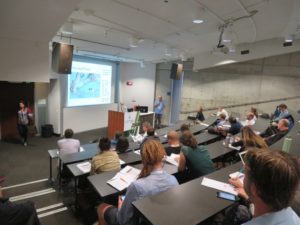
Myself presenting at the conference ( On Hooded Plover/Lake foreshore Conservation)
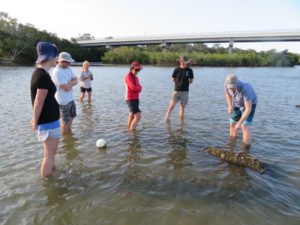
I attended the Marine and Coastal tour for the Conference. Here we are looking a trail Oyste Shell fish habitat restoration project site on the Noosa River, Sunshine Coast.
 Inspecting a small mangrove rehabilitation project run by a community group in Coolangatta, on the Sunshine Coast.
Inspecting a small mangrove rehabilitation project run by a community group in Coolangatta, on the Sunshine Coast.
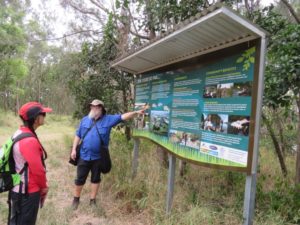 At the Bullimba Creek restoration site interpretative signage, a major 25 year old and ongoing, award winning, eco-engineering restoration site at Brisbane Port.
At the Bullimba Creek restoration site interpretative signage, a major 25 year old and ongoing, award winning, eco-engineering restoration site at Brisbane Port.
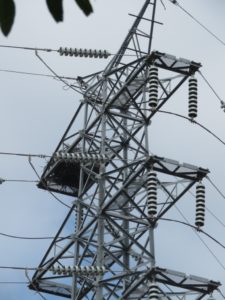 A Sea Eagle’s nest in a pylon at the Bullimba Creek restoration site, Brisbane Port.
A Sea Eagle’s nest in a pylon at the Bullimba Creek restoration site, Brisbane Port.

